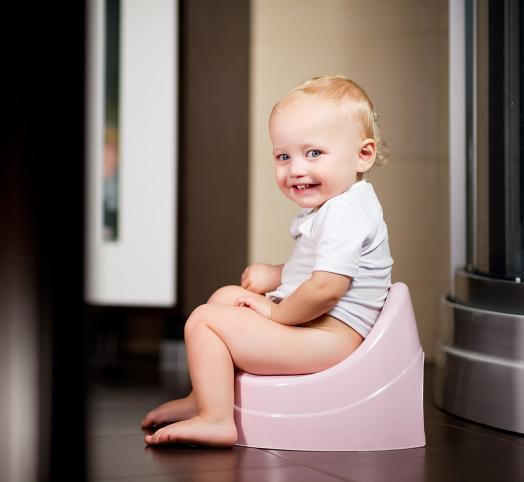On the way to clean and dry
Updated on March 22, 2023
Created on July 24, 2019
Find your nearest point of sale here
Updated on March 22, 2023
Created on July 24, 2019

On average, children are clean and dry at around two-and-a-half years during the day and around three years at night.
There are significant variations from one child to another, however, and it is essential to let your little one develop at their own pace. But how do you know when the time has come? Simply by observing your child!
Unmistakable signs Whether your child is aged 18 months, two years or older, it is time to offer them a potty when they show you they want to take off their nappy: they will try to pull it off, cry when you change them or complain when it is full.
Also pay attention to their expressions: often, children who are ready to be clean and dry indicate it in some way (with a gesture, posture or word) before they relieve themselves.
That is where you come in, by putting them quickly on the potty. If your child is happy to sit on it and it proves “conclusive”, then they are on the right track!
On the other hand, if they cry when they see the potty, or sit on it regularly without doing anything, it is a bit too early and you can try again in a few weeks. Neither too early nor too late It is completely futile expecting a child to become clean and dry if they are too young; until they can control their sphincters, they are simply incapable of holding on.
On the other hand, do not leave your child in nappies for convenience, even if they have accidents, if they are asking to take them off: if you get in the way of their urge to grow up, there is a risk they will regress and bask in their role as the baby in nappies.
The path to becoming clean and dry will then probably be more difficult. A gradual process Although some children become clean and dry overnight, most learn gradually.
Once your child is out of nappies, be kind and positive if they have an accident: it is essential not to get annoyed or put them under any kind of pressure, which could upset them.
The summer is the ideal time for leaving nappies behind: you can leave your child undressed or without many clothes on and it is easier to clean up little accidents. Clean and dry during the day... and at night?
Generally, being clean and dry at night comes a few months later than during the day. As soon as your child stops having accidents when they are awake, you can leave them without a nappy for their nap: they will most probably be able to hold on.
For night times, look at their nappy in the morning: if they are frequently dry, it is time to take them off at night as well. Be aware, however, that your child may continue to need protection at night for a bit longer, without it being a problem: it is only after the age of five that bed-wetting is regarded as enuresis.
In this case, you should consult a pediatrician. The ‘starting school’ deadline What if your child is about to start school but is not yet clean and dry? Try not to be too impatient: often, the example set by their little classmates and the desire to fit into the group have spectacular effects, and lots of children become clean and dry just as they start school.
Also, a few accidents during the first few weeks of school are perfectly normal: the teacher will probably ask you to pop a change of clothes into their school-bag just in case. Whatever happens, try not to scold your child, which will only complicate the situation. Tolerance, trust in your child and encouragement are the best way of helping them to grow up happily.